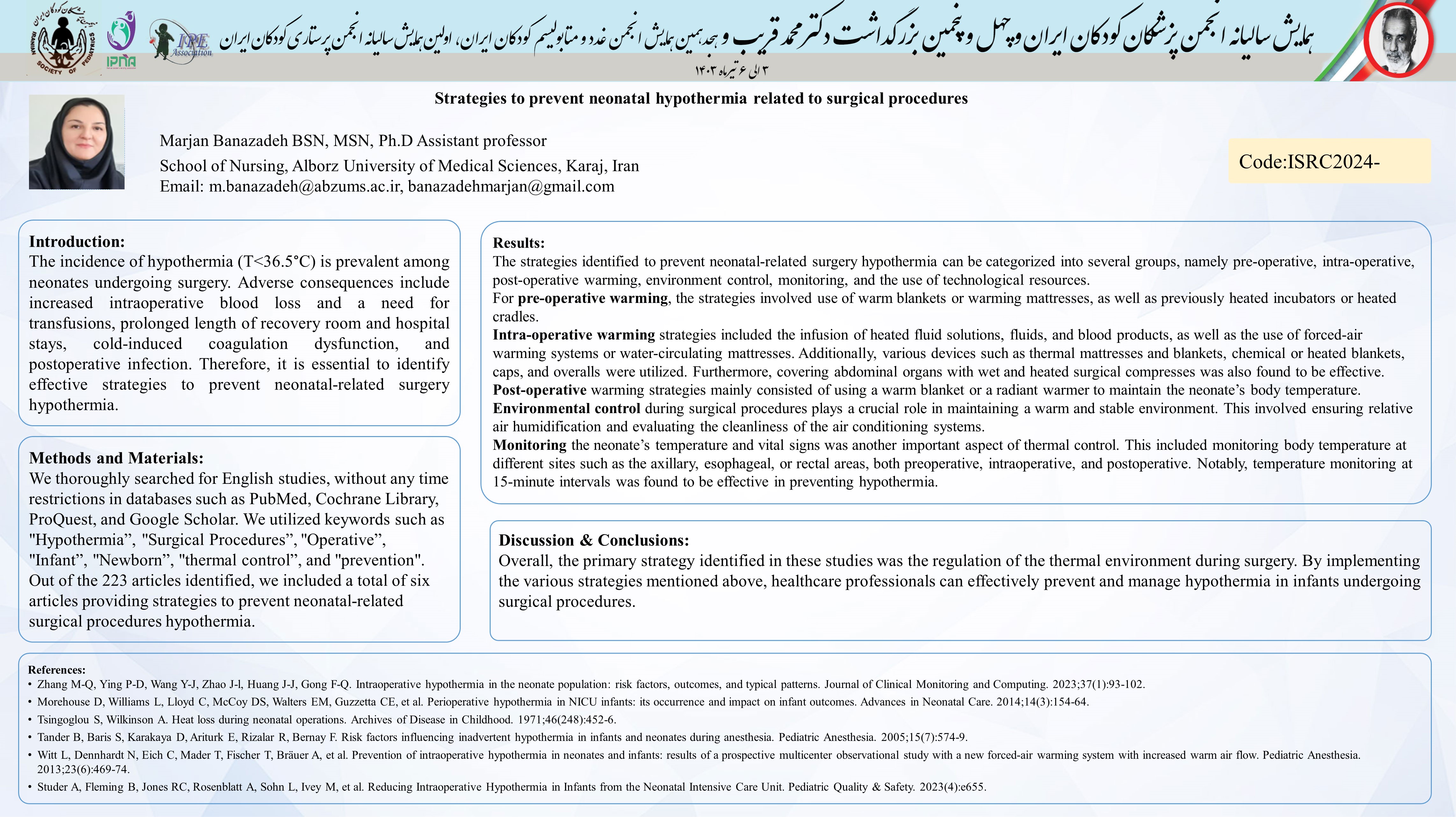راهکارهای پیشگیری از هیپوترمی نوزادی مرتبط با روش های جراحی
کد: G-1056
نویسندگان: Marjan Banazadeh BSN, MSN, Ph.D Assistant Professor © ℗
زمان بندی: زمان بندی نشده!
دانلود: دانلود پوستر
خلاصه مقاله:
خلاصه مقاله
Background:The incidence of hypothermia (T36.5°C) is prevalent among neonates undergoing surgery (1). Adverse consequences include increased intraoperative blood loss and a need for transfusions, prolonged length of recovery room and hospital stays, cold-induced coagulation dysfunction, postoperative infection (2-5). Therefore, it is essential to identify effective strategies to prevent neonatal-related surgery hypothermia. Methods:We thoroughly searched for English studies, without any time restrictions in databases such as PubMed, Cochrane Library, ProQuest, and Google Scholar. We utilized keywords such as "Hypothermia”, "Surgical Procedures”, "Operative”, "Infant”, "Newborn”, "thermal control”, and "prevention". Out of the 223 articles identified, we included a total of 6 (1, 6-10) articles providing strategies to prevent neonatal-related surgical procedures hypothermia. Results:The strategies identified can be categorized into several groups, namely pre-operative, intra-operative, post-operative warming, environment control, monitoring, and the use of technological resources. For pre-operative warming, the strategies involved the use of warm blankets or warming mattresses, as well as previously heated incubators or heated cradles. Intra-operative warming strategies included the infusion of heated fluid solutions, fluids, and blood products, as well as the use of forced-air warming systems or water-circulating mattresses. Additionally, various devices such as thermal mattresses and blankets, chemical or heated blankets, caps, and overalls were utilized. Furthermore, covering abdominal organs with wet and heated surgical compresses was also found to be effective. Post-operative warming strategies mainly consisted of using a warm blanket or a radiant warmer to maintain the neonate’s body temperature. Environmental control during surgical procedures is crucial in maintaining a warm and stable environment. This involved ensuring relative air humidification and evaluating the cleanliness of the air conditioning system. Monitoring the neonate’s temperature and vital signs was another important aspect of thermal control. This included monitoring body temperature at different sites such as the axillary, esophageal, or rectal areas, preoperative, intraoperative, and postoperative. Notably, temperature monitoring at 15-minute intervals was found to be effective in preventing hypothermia. Conclusion: Overall, the primary strategy identified in these studies was regulating the thermal environment during surgery. By implementing the various strategies mentioned above, healthcare professionals can effectively prevent and manage hypothermia in infants undergoing surgical procedures.
دیدگاه ها (0)
ارسال یک دیدگاه
ارسال دیدگاه توسط مدیریت بسته شده است.
